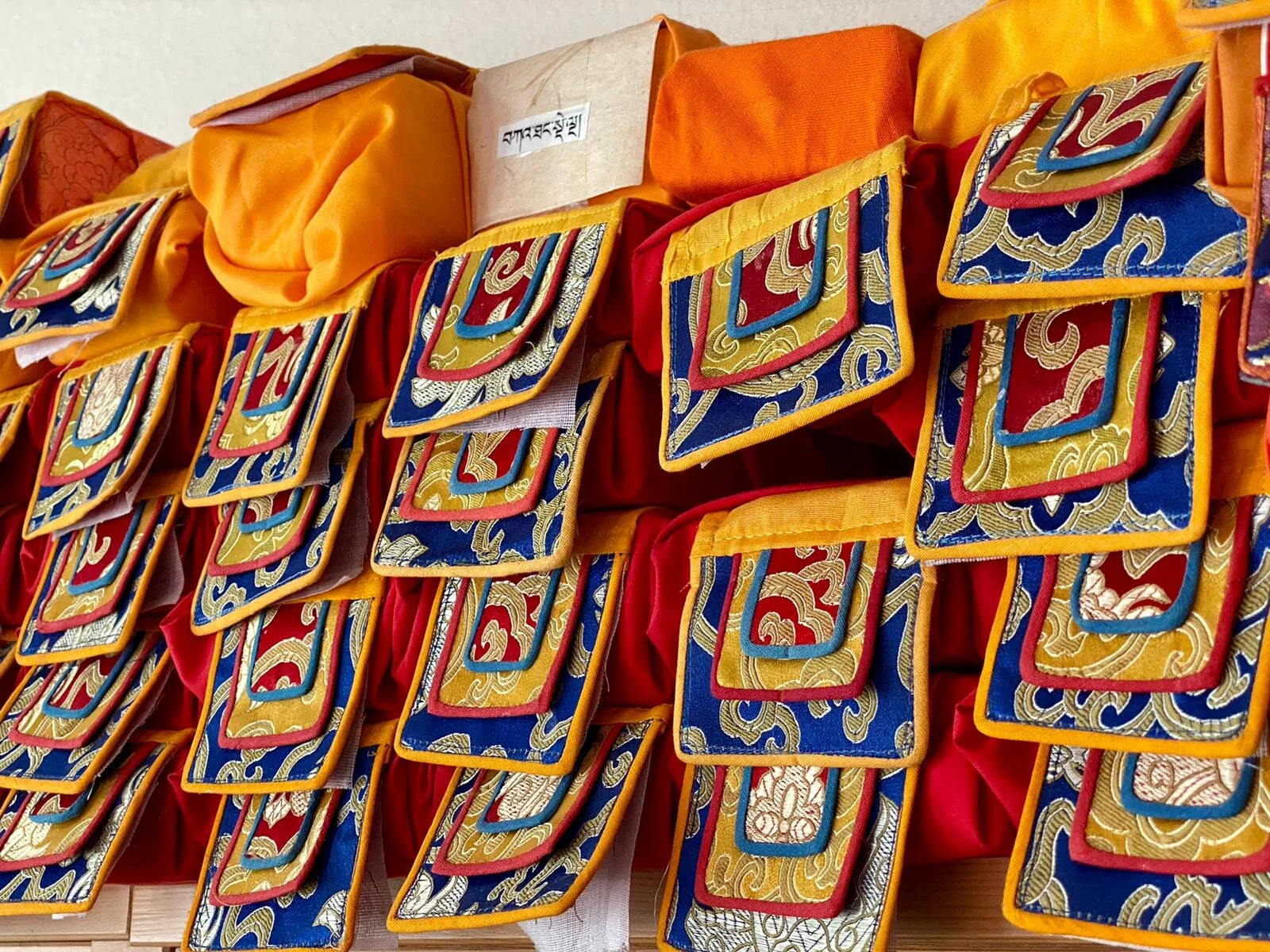Our Sources
A Brief Summary For the Curious reader
The 84,000 sutras describing the teachings and activities of the Buddha are a vast body of scripture, with no single source telling us everything we need to know. The Nekhor team has highlighted the Eight Great Sacred Sites of the Buddha, but this list of pilgrimage places sacred to the Tathagatha could be expanded much further. In the case of the eight great sites, the first four were listed by the Buddha himself and are the easiest to locate in the sutras. The Lalitavistara (or Play in Full) Sutra, as published by the Dharmachakra Translation Committee, served as our guiding resource for the sites at Lumbini, Bodh Gaya, and Sarnath. This sutra describes in rich detail from the Mahayana perspective how the Buddha manifested in our world and traversed the path to great awakening, starting with his birth in Lumbini and ending after his first teaching in Sarnath. Though the sutra does not contain the full story of the other six sites of pilgrimage, we continually reference it as we discuss the later sites, since it does describe the Buddha’s early presence in these locations.
The Lalitavistara Sutra is not the only account of the Buddha’s life, and it should be understood that no account is better than any other. There will always be slight differences in the telling of a story. What we have provided here at Nekhor is essentially a synopsis of what is written in the Lalitavistara Sutra, relying on it as the Mahayana presentation of his life. The Buddha’s activities are perceived in myriad ways, depending on the inclinations of beings, and as a result there exist various interpretations of these activities.
For the Buddha’s parinirvana in Kushinagar, we turned to the Theravada presentation as depicted in the Mahaparinibbana Sutta, courtesy of the Sister Vajira and Francis Story translation. Though Nekhor generally presents things from the Mahayana perspective, the Mahayana Mahaparinirvana Sutra is a more verbose account, and the events would have been harder to present in this format. We highly recommend exploring the Mahayana version, at the reader’s leisure.
We turned to a variety of sources for the last four sites pertaining to the Buddha’s great miracles––the sites at Vaishali, Rajgri, Shravasti and Samkashya. While all four are mentioned in the sutras, the descriptions of the Buddha’s miracles at these sites are mainly found in the commentaries. For the story of the Buddha and the monkey at Vaishali, we turned to the Mulasarvastivada Vinaya. We found the tale of the wild elephant at Rajgir in the Pali Canon. For the Buddha’s miracles at Shravasti, we relied on the accounts in the Divyavadana. Our account of the Buddha’s descent into Samkashya was taken from Bhikkhu Analayo’s partial translation of the Samyukta-agama, as presented in the Journal of the Oxford Centre for Buddhist Studies, Vol. 2, May 2012.
Lastly, we give descriptions of the current condition of the sites, along with suggestions as to what to visit whilst there. For this, we have combined the first-hand experience of our team with accounts by other reliable pilgrims. For the sites not recently visited by our team––mainly Vaishali, Shravasti, and Samkashya––we have relied on the work of Brother Chan Khoon San in Buddhist Pilgrimage (2009 edition), and on Elizabeth Cook’s Holy Places of the Buddha, originally published in 1994. As activities at these sites are in constant flux, some of our information may already be outdated; we apologize for this, and plan to make pilgrimage to each of the sites in the near future.

